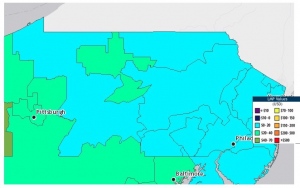On the baseball field, a shortstop should have the option to turn in a moment. At the break of the bat and the blaze of the ball’s rosy white haze, the defender goes to make the play. With regards to retail power plans, your capacity to turn to another one might be your best play. In any case, a contractually allowable charge, or ETF, can hinder you from changing to another power plan. Be that as it may, a few plans have entirely sensible ETFs. These Pulse Power reviews plans can give you the adaptability to take action that will set aside more money after some time. We should look at these low ETF rate year plans that won’t hamper your capacity to explore every available opportunity.
What Affects the Price of Electricity

Economy: The condition of the economy is one of the driving variables of power costs. General expansion can mean higher energy rates.
Climate: When the weather conditions are blistering or cold, we utilize greater power to cool or intensity our homes. What’s more, a more appeal at power implies greater expenses.
Outside factors: A pandemic, war, or normal fiascoes can change power costs because of their impact on the economy.
Find a Low ETF Rate
The Pulse Power Texas Saver 12 and the New Power Texas Power of Credit 12 plans have almost indistinguishable power realities names. The two plans publicize a sensibly serious pace of 8.0 pennies per kWh. While the majority of the present plans have contractually allowable charges of something like $150, these plans tip the scales at $125. Regardless of how early you end your agreement, you pay that $125.
It’s occasionally contended that ETF rates that stay consistent may cost you less over the long haul — IF you leave the plan not long after beginning it and IF you change to a plan with a much lower rate. Sadly, that is additionally actually quite difficult.
Get A Steadily Dropping Low ETF Rate
Some of the time retail power organizations unexpectedly structure their contractually allowable charges. Instead of a level expense, they charge a sum for every month left on a client’s agreement period. Thus, for every month you stay with your supplier, the less you should pay to early leave the plan. Normally, the most recent two months will have an adequately low ETF rate that makes it less exorbitant to early leave. That is how the ETF deals with the 4Change Energy Maxx Saver 12 plan. This plan’s typical cost is 8.8 pennies. The ETF rate for this plan is $20 for every month staying on the agreement. We should turn this forward in a down-to-earth model.
Let’s assume you pursue this plan now and need to switch when costs commonly drop around April. You’d be around five months into your agreement which implies you would pay $20 for every one of the seven months staying on your agreement. That variable to a $140 contractually allowable charge. Will the reserve funds on another plan be worth the effort by then? That relies on how low the new plan’s cost is.
Finishing Your Contract
If you choose not to change plans and consequently spare yourself from the ETF, you need to look for Texas power. Not long before your plan closes, you ought to track down another plan to suit your power user needs. On the off chance that you don’t, your retail supplier will move you to a variable rate plan. So you most certainly need to secure another plan to try not to vacillate — and frequently high — costs.
